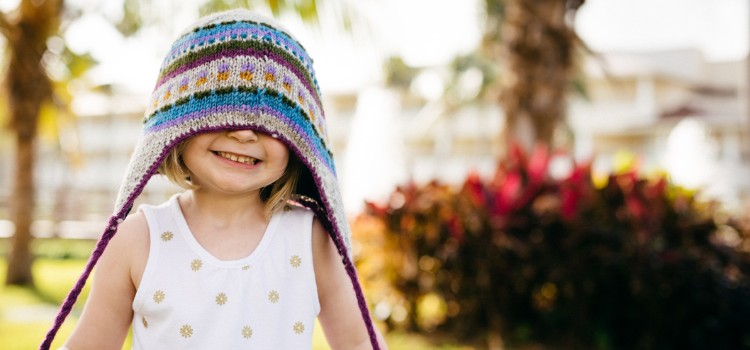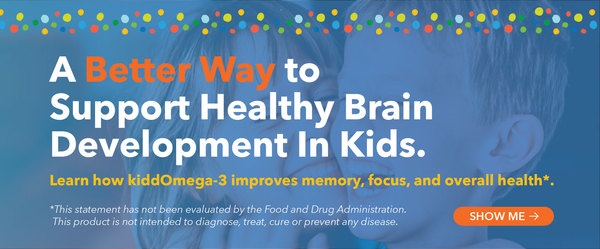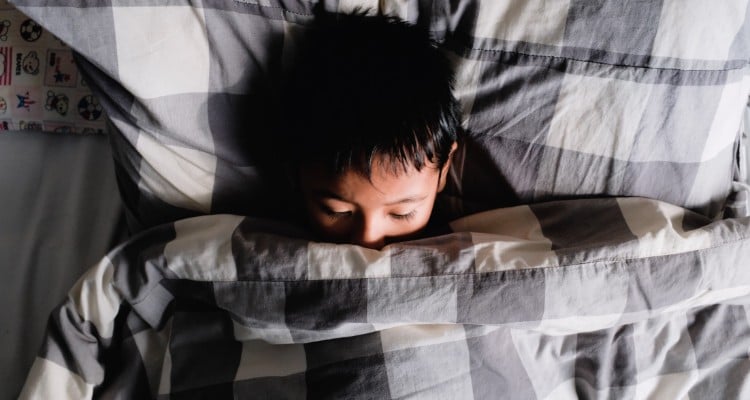
By Stephanie O'Neill Bhogal DC, DICCP
With so many children struggling to get a good nights' sleep, the effects of an improper night of rest are becoming more noticeable across America.1
Recent research has begun to dig deeper into the root causes of sleep issues, as well as correlations between sleep and various conditions related to neurological and immune system dysfunction, such as stress and anxiiousness, mood swings, and insulin regulation.2
It is well known that good quality sleep is essential for proper growth and development of children, but what some parents and practitioners may not know is that childhood sleep issues may be part of a bigger health picture.
When it comes to sleep, various factors have been found to deeply impact its quality and duration in children and adults alike.
Gut Flora Imbalance
The health of the gut microbiome has become an increasingly popular topic as scientists identify links between the gut flora composition and the brain-gut axis.2 One of the most fascinating finds is the relationship between the 1,000+ microbes in the gut and hormone secretion.
Melatonin is a hormone that is typically produced in the pineal gland and is responsible for initiating the sleep-wake cycle. However, researchers have been discovering that many of the microorganisms that live in our gut also produce a variety of neurotransmitters, cytokines, and metabolites such as serotonin, dopamine, GABA, and melatonin. These and other compounds can affect the activity of the CNS by regulating enteroendocrine cells in the gut to release specific hormones.
When children are experiencing sleep disturbances, one explanation could be due to a challenge to their gut flora. For example, a diet lacking in nutrients but filled with processed foods can be a major source of gut flora imbalance and, thus, sleep dysfunction.
Travel and vacation are prime examples of something that can disrupt a child’s physiological routines, helping to create a microbiome imbalance that contributes to poor sleep quality.
Certain methods can wreak major havoc by wiping out the gut flora environment, the secondary source for our body’s internal production of melatonin and other neurotransmitters. If sleep issues are noticed, dietary and probiotic supplementation can be a great way to help re-establish the microbiome to its full functionality.*


Quality of Sleep
When it comes to developing children, both quality and quantity of sleep are important. It is recommended that children between the ages of 3-5 get approximately 10-13 hours of sleep, and those between 6-12 get 9-11 hours. Technology has made this much more difficult to attain, as kids have become even more dependent on their electronic devices to provide them with entertainment even into the night. Prolonged blue light exposure has been found to interfere with circadian rhythms, melatonin production, and sleep quality and is another underlying problem seen in children who have issues with sleep.3
Children who stay up past their bedtime often exhibit restless behavior because they are overtired. This can get worse as it becomes a cycle that feeds itself, looping from hyperactivity to exhaustion. Similarly, physical discomfort can be just as bad for kids who toss and turn in bed all night.
In particular, parents and physicians should look out for children who display tossing and turning at night and end up upside down in bed the next morning. This type of phenomena, while potentially chiropractic in nature, can also be a sign of sleep problems. Some sleep challenges that are typically thought of as adult issues can be relatively common in children as well. Some of these challenges are due to enlarged adenoids and tonsils and not being able to get enough oxygen circulating during the night.
Improve Sleep with Dietary Changes
To improve a child’s sleeping habits, parents can start by creating healthy eating habits for their children. Consistency is key, especially when considering the time it takes to fully recover the gut microbe environment after it’s been destroyed by processed foods and harsh chemicals. A balanced diet of protein and fats at dinner can ensure a good source of energy throughout the night, versus the short-lived energy spikes of sugary foods.
Magnesium-rich foods such as quinoa and avocados can also be incorporated into a child’s diet, as magnesium is a known supporter of maintaining healthy levels of GABA.* Keeping meals to at least one hour before bed can help the body enter into a much more effective sleep state. Probiotic foods and supplements may also be considered by practitioners and parents looking to improve the overall well-being of their children.
Improve Sleep with Lifestyle Changes
Establishing a consistent bedtime routine that is void of electronic devices and filled with more calming activities can help reduce the hyperactivity some parents face when trying to get their kids to bed. Giving children time to wind down with a warm bath and a good book or some family time can be incredibly effective.
Small changes, like getting a new mattress or adjusting the temperature or lighting in the room, can help reduce potential physical discomforts that may be contributing to a child’s sleeping problem.
Sleep is critical in supporting everything from our immune system to our mood to just being able to function properly throughout the day. There are many factors that contribute to poor sleep in children, such as gut microbiome constitution, consistency in sleep schedule, physical discomfort, and breathing difficulties. In order to pinpoint a proper solution, it is imperative for practitioners and parents to consider a multifaceted approach that incorporates both dietary and lifestyle changes.
*These statements have not been evaluated by the Food and Drug Administration. This product is not intended to diagnose, treat, cure or prevent any disease.

Stephanie O’Neill Bhogal DC, DICCP did her undergraduate studies at McGill University in Montreal,
Canada and received her DC degree from Palmer College in Davenport, IA in 2002. She completed her
Pediatrics residency at Palmer College in 2005 when she also received her Diplomate in Clinical
Chiropractic Pediatrics (DICCP). Dr. O’Neill has taught Obstetrics and Pediatrics at both Palmer college
of Chiropractic and Life Chiropractic College West. With 17 years of professional experience, both
teaching and in private practice, her focus is on routine and complex pediatric and pregnancy care. Dr.
O’Neill presents regularly at national and international conferences. She also teaches in the ICA
(International Chiropractors Association) Pediatric Diplomate program and is proud to serve as the chair
of the ICA Council on Chiropractic Pediatrics. Dr. O’Neill enjoys travelling and service through Peak
Potential Outreach, a non-profit foundation she and her husband founded to provide healthcare to
underserved countries around the world.
1 “Sleep Disorders - Maternal and Child Health Burea.” 2011. https://mchb.hrsa.gov/whusa11/hstat/hshi/downloads/pdf/224sd.pdf. Accessed July 1, 2019.
2“The Role of Microbiome in Insomnia…- NCBI.” 2018. https://www.ncbi.nlm.nih.gov/pmc/articles/PMC6290721/. Accessed July 1, 2019.
3 “Blue Light Has a Dark Side - Harvard Health Publishing.” 2012. https://www.health.harvard.edu/staying-healthy/blue-light-has-a-dark-side. Accessed July 1, 2019.













-1.jpg)





